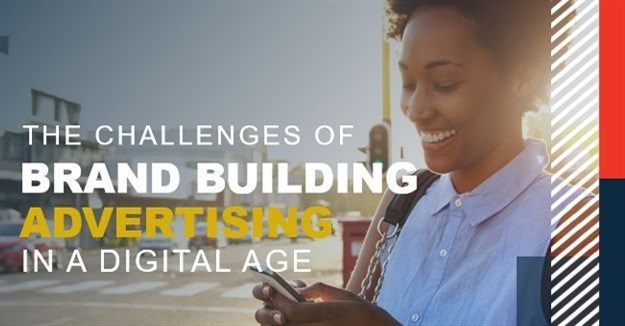
Reimagining marketing: Brand building in the digital age
Kantar Millward Brown recently held an appropriate insights-sharing session for marketers weary with the way things are done. Global media and digital CEO Gonzalo Fuentes spoke of the importance of having a focus on the long-term marketing over the short-term product sales boost.

Fuentes started on the note that the impact of technology and mature digital channels is undeniable, both on marketing and consumers, with mobile an integral component of any marketing mix. Just think of the way online video consumption has grown, programmatic solutions are everywhere and even native advertising is no longer the new kid on the block, but it’s all about the data at the end of the day. The result is that advertising today is a road full of challenges, especially if you’re aiming for brand-building longevity that resonates with customers.

Luckily, Fuentes came equipped with knowledge on which platforms offer the biggest brand rewards or ROI, and how risks can be minimised through learnings from across the consumer journey. It’s the best way to create breakthrough marketing in a connected world. By ‘digital’ he doesn’t just mean what you see on the internet or in apps, but the entire digital ecosystem, from OTT TV to addressable TV and digital radio.
These have brought the opportunity to multiply the channels in which we can access consumers, and it’s only just begun as AI, VR are being increasingly explored and discussed and offer the possibility to influence consumers at specific moments in their decision-making journey, but we need to stop and think this through carefully as they also pose the danger of limiting the potential of advertising. That’s not to say Fuentes is inherently sceptical though. He has been with Kantar for 16 years, and says as a Spanish sociologist and a brand builder, he’s obviously also a bit of a romantic. That said, he can’t deny the fact that opportunities to engage with consumers have changed.
Fuentes asked who has used the following statement in the past week:
While most of the room raised their hands, Fuentes pointed out that consumers don’t necessarily agree with this – in fact, only 3/10 South Africans claim to have seen online advertising relevant to them in the past week, which is expected to drop to just 1/10 if we fast-forward to a market that’s 55% or more digitally-run, as the snowball of information overload gathers more momentum. Even worse? Just 4/10 of those remembering seeing advertising online claim that it was not relevant to them at the moment, expected to drop to 3/10.
While there’s definitely more advertising today than there was three years ago – 67% of respondents agree to this, it’s also a lot more intrusive and annoying today than ever before, say half of respondents, so consumers are fast to block advertising, and aren’t likely to miss what they’ve blocked. In fact, results from Millward Brown AdReaction 2017 show that up to a third of South Africa’s Gen Z has already installed an ad blocker. This is quite alarming as you could find that half of your future target audience might not be even be able to see your ads.
Are you just flipping a coin on your advertising reach?
That’s not to say we all need to panic and fear that brand-building advertising is dying, though. Fuentes even admitted to considering that as a more dramatic title for his presentation.
While the Coalition for Better Ads sounds like the title of a Marvel movie, it actually exists. Two of the most powerful publishers, Facebook and Google; with two of the most powerful media-buying organisations, Omnicom and GroupM; along with two of the top five advertisers in the world: P&G and Unilever have grouped together as the issue of ad-blocking is real, but Fuentes says even they are only focusing on one aspect of what’s driving current short-term advertising trends...
Programmatic: All about the data
For decades, the marketing industry has relied largely on instinct to determine the attitudinal KPIs to measure the success of brand-building campaigns, and KPIs linked to financial outcomes. This makes marketers far more credible in the boardroom, but pushes marketers away from attitudinal brand measures that can indicate long-term success.
We need to respond to the demand for evidence and the need for speed. Recent industry thinking, notably from the Ehrenberg Bass Institute, has enhanced our understanding of some of these key measures and offered new complementary metrics. Finally, new data sources such as search and social data are providing faster moving brand health indicators.
The moment you do a search online, you add to your digital footprint and you’re bombarded with related advertising. Sadly, there isn’t a lot of African data out there on this. Fuentes says the closest is from Asia’s Comscore. Of all campaigns they measure, 5/10 impressions in Asia are served outside of the target audience. Fuentes likens this strategy to flipping a coin.

With advertising for FMCG, that goes up to 7/10 impressions being served outside of the target audience and when looking at age groups, that’s also 7/10 impressions being served outside the target audience for 15 to 24-year old millennials. With your consumer hat on, it’s fairly obvious that your digital footprint on household cleaners, for example, is not likely to be very high. The categories with lower engagement and thus with lower data points tend to be less precise. When it comes to demographics, the more specific the group we are trying to reach, the higher the impressions that miss the target audience.
This highlights the importance of audience validation and knowing that you’re reaching your intended audience. Without it, the advertising simply isn’t effective in building your brand. That’s where data fits in, so that you understand who you speak to and how often, as well as the brand lift aspect of how much the marketing activities changed consumers’ attitudinal response to the brand. Now, brands are going beyond online behaviour to understand the impact of brand attitudes. But it’s a little trickier than it sounds…
The digital elephant in the room: Click-through rate
In building your own data sets from attitudinal data, Fuentes said the algorithms are not the problem – it’s the data we shouldn’t trust blindly.
The intuitive value of digital is that it can be measured, and influence the consumer at specific moments of truth. This is partly driven by the quarterly pressure from board rooms, but also driven by the expectation that in a digital world, we should be able to identify the people at the moment of truth…and measure their conversion! Unfortunately much of digital is performance-based advertising, which leads to short term strategies that are not always related to brand building.
In addition, digital metrics sometimes seem more important than the campaign outcome. Sadly, some of those metrics are not that relevant today, like app installs and click-through rate, which Fuentes likens to the elephant in the room. The Einstein quote that “not everything that can be measured counts and not everything that counts can be measured” is relevant here.

So if you’re purely optimising on click-through rates, you’re likely optimising outside your target audience. You need to measure what really matters, even if that means not being optimised on real-time. The actual brand is what matters, as so much data correlates brands with sales. Building good brands is literally good business – and while tempting, short-term strategies aren’t always as efficient.
In the long-term, brands with a clearly defined purpose in consumers’ eyes grow faster than others and within the same category, you can charge up to 16% more for product if you have a strong brand purpose.
This is obviously fulfilling work but as it’s such an intense role, the average lifespan of a chief marketing officer at a specific company these days is just 18 months in the UK, and South Africa is following suit – barely enough time to get to grips with the brand you’re meant to live.
Fuentes spoke of this all coming together as almost the perfect storm for ‘buy me now’ advertising, but it definitely needs to be balanced with longer-term brand building. Shorter term strategies not always as efficient as longer term investments, as better brand purpose underpins value for 12 years’ brand value growth.
Beware the impact of ‘bad ads’
Fuentes shared the following ways to improve your brand-building strategy:
- Know who you are talking to.
- Get better data.
- Be more consumer-centric, as you have zero control over your brand: The marketing industry has largely relied on instinct to determine attitudinal KPIs to measure the success of brand-building campaigns. More recently, these have shifted to include a proven relationship to financial outcomes.
This shift makes marketers far more credible in the boardroom, and crucially improves the probability of generating positive financial returns on marketing investment.
It’s as simple as having a consumer-centric format that gives the viewer control. Here’s why that’s important…
Fuentes says as much as 80% of ‘creative time’ for digital is spent on the media plan and just 20% on the actual creative, and the results are telling: Only 27% of South African Gen Z respondents claim to be positive about receiving mobile video ads, with 53% highly annoyed by mobile ad pop-ups and those that auto-play on social media. We clearly need better cross-device creativity.
But it’s not all doom and gloom. Fuentes says, the good news is that many of the metrics that have been the foundation of brand tracking and equity research for years have very well proven relationships to long-term sales. And that recent industry thinking, notably from the Ehrenberg Bass Institute, has enhanced our understanding of some of these key measures and offered new complementary metrics. New data sources such as search and social data are also providing faster-moving brand health indicators.
But instead of putting figures front and foremost, Fuentes says creativity in digital still matters, as bad creative can actually drive a negative brand impact, especially when comparing between the top 20% of creatives and the bottom 20% in their database. This is quite serious as consumers exposed to a ‘bad ad’ for your brand are less likely to buy it than those who have not seen your advertising at all! Scary when you consider we’re talking about the same set of consumers that see TV advertising in a positive light.
What SA consumers want from your brand’s advertising
So, if you’re going to interrupt their experience, you might as well make it engaging. Determining what the average South African consumer wants to see is relatively easy: Kantar Millward Brown’s Ad Reaction 2017 shows that a good ad is funny or humorous, tells an interesting story and has good music, while to a lesser effect respondents also like the fancier aspects of advertising that uses special effects, features augmented reality (AR), and features a famous celebrity or social media/online celebrity. It’s not as easy as throwing these elements into the mix though, as you still need to incorporate the brand, while also entertaining and being informative.
The VW Tiguan ‘laughing horse’ is a good example of getting this right:
While telling a great brand story that ultimately won the ad a Silver Lion at Cannes for creative effectiveness, it was also pre-tested in a YouTube and Facebook environment, and in less than 48 hours, led to a significant increase in sales for the brand. It was one of the best automotive TVCs ever tested across newness, brand fit, engagement, enjoyment, brand appeal, relevance and activation. It resulted in 36,000,000 views after across all platforms and 2,100,000 YouTube views after just a month, with 95% Likes from 1,700 ratings.
As opposed to in-market performance, Fuentes points out that when optimising like this, they can replicate any publisher environment, in any device. The bonus of in market measurement is that it delivers different perspectives of the brand funnel, as well as the creative, while understanding the effects of the creative, the formats, and the frequency of the placements. Key among these is that the creativity needs to make the most of the multiple channels available.
Fuentes mentioned that Kantar Millward Brown has worked with the Advertising Research Foundation (ARF) and spoke us through Ad Age’s summary of the ARF’s How Advertising Works Today from 2016, which analysed 5,000 campaigns for 1,000 brands in 41 countries. They have found that while campaigns that use a single channel may have ROI at 100%, those that use two channels result in 19% more ROI – that impact is incremental, so that those who use five channels see +35%. But note that when Fuentes speaks of ‘channel’, it’s not just the traditional ‘visual broadcast’ platforms of TV and digital but also out of home, outdoor and radio.
A word of caution, though: Engaging across multiple platforms obviously means reaching consumers wherever they are, at different times of day. The opportunity to use different channels like this has unfortunately led to the rise of the fragmented or schizophrenic brand. Fuentes quotes Unilever’s Keith Weed who states that brand integration keeps him up at night as it’s so easy to lead to brand fragmentation, which he calls a massive risk that ultimately lessens brands’ power and consistency.
That’s why identifying and deploying advertising ideas before the execution of those ideas is more important than ever. Research proves that a slightly different edit rather than using the same one increases impact best – adapting to the platform serves this purpose best. So a unified approach to the creative strategy that ties in with synergies leads to higher ROI as being exposed to the messaging on more than one media platform leads to more impact. Engaging is only the first step, you then need to make it consistent and adapt the message to the media.
Fuentes ended with the following four thoughts:
- Start with what’s easy to measure, with what you’re disciplined enough to do. Then question whether the advertising idea and creative is strong, well-integrated across different media and easily identifiable across those media. What can you measure before you commit the spend?
- Measure what matters, not just what you can measure. Fuentes says to start with what’s easy to measure, and has great impact on the marketing investment. You need to ensure you have the right brand strategy that will drive growth, using the brand itself as a key KPI to measure impact, and remember to validate your audience. Also use logical performance metrics if running a tactical campaign.
- Avoid perceived “perfect” measurement in silos. You need to talk to your consumer where your consumer is and understand the consumer journey. Fuentes says to be open to probabilistic measures that give an overall perspective of the investment, and that the measurement of synergies is more relevant than touch points on their own.
- Explore how survey data can enrich your internal data. Keep in mind what measures you need to drive better targeting, in order to make it even more accurate and more accessible.
That’s how you go about #gettingmediaright. Click through to the KantarMillward Brown press office or follow them on Twitter for the latest insights.
About Leigh Andrews
- #Loeries2020: Behavioural economics as creativity, but not as we know it... - 24 Nov 2020
- #DI2020: Ignite your inner activist - representation through illustration - 27 Feb 2020
- #DI2020: How Sho Madjozi brought traditional Tsonga xibelani into 2020 - 27 Feb 2020
- #DI2020: Silver jubilee shines with Department of Audacious Projects launch - 26 Feb 2020
- #BehindtheSelfie with... Qingqile 'WingWing' Mdlulwa, CCO at The Whole Idea - 26 Feb 2020
View my profile and articles...

